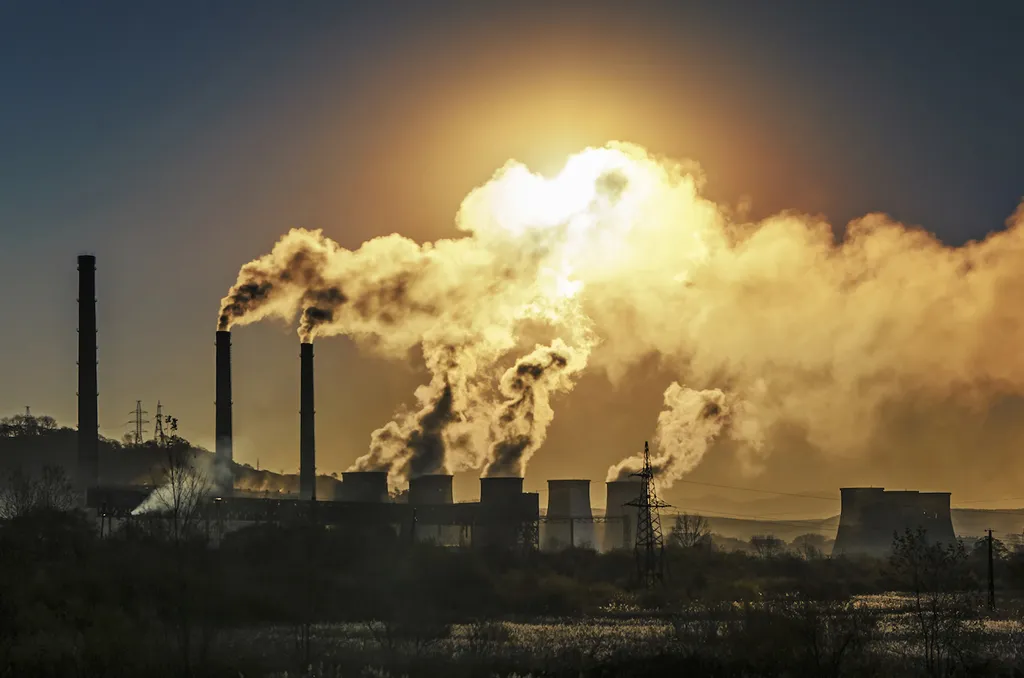A Corrective Tax on Carbon Emissions
In most states dropping a piece of trash on the sidewalk can earn someone a hefty fine. Consumer trash or liquid deposits are considered an environmental hazard to the larger public. Similarly, greenhouse gas emissions generate negative environmental impacts. Impacts from greenhouse gas emissions can include decreasing air quality due to smog and air pollution, which can contribute to increased public health risks from respiratory illnesses. More broadly, greenhouse gas emissions trap heat in the atmosphere, which has created a global warming effect that is changing the climate in devastating and lasting ways.
In the U.S., the biggest emitters of greenhouse gas emissions is the transportation sector, closely followed by the electricity sector. Electricity in the U.S. is moving toward cleaner energy sources, but according to the Environmental Protection Agency, 62% of the nation’s electricity still comes from carbon-based fuel sources such as coal, oil, and natural gas. Companies emitting large quantities of emissions profit off the burning of fossil fuels but seldom feel the cost burdens of the negative impacts.
How Would It Work?
In December of 2016, the Congressional Budget Office (CBO) put out a report – with options on reducing the federal budget deficit – detailing how a carbon tax might operate in the United States. CBO proposed a carbon tax of $25 per metric ton on most, but not all, emissions generated by a variety of sectors including electricity, manufacturing, and transportation. The tax would increase yearly by 2%. CBO predicted the first ten years of a carbon tax would see $977 billion accrued in tax revenue for the federal government and a 9% reduction in emissions across all participating sectors. Taxing carbon can be a way to not only improve atmospheric air quality but also to generate revenue towards additional climate mitigation strategies.

Additionally, carbon taxes can be structured in a way that builds flexibility for markets to have autonomy over how they choose to reduce emissions – the onus doesn’t need to be on curbing productivity. Emissions reduction can take place through lower emissions intensity, reductions in energy demand, or through capture and storage. A carbon tax could also standardize emissions monitoring and data collection through a federal regulatory body.
And finally, creating a U.S. tax on carbon emissions would be feeding into a global framework. As shown by the World Bank’s Carbon Pricing Dashboard, more than 70 national and subnational jurisdictions have carbon pricing policies. A carbon price enacted in one of the world’s richest economies can act as a price signal for the global economy to move polluting industries and their associated supply chains away from carbon-based fuel sources.
How Might It Fail?
A carbon tax can be an effective environmental and financial tool. But where and how can it go wrong?
- A global issue – Climate change is problem created and felt globally, and for true effectiveness, so must the solution. A U.S. carbon tax might help mitigate the greenhouse gas emission of one o the leading polluting countries in the world, other high emitting countries may not be inclined to follow.
- Political resistance – Fossil fuel companies would commonly weaponize these policies politically by indicating that the costs of these taxes would be felt most by consumers. Additionally, increasing taxes of any kind is rarely politically palatable.
- The price is high – In 2018, the United Nation’s climate science panel indicated a carbon tax would need to be at least $135 per metric ton to stop global temperature rise above 1.5 degrees Celsius. To be truly effective at reducing large amounts of emissions, the price needs to be much higher than the average carbon tax.
Only One of the Tools in the Toolbox
The truth is, while a carbon tax might hit at a root of the climate crisis – polluters unwilling motivated to significantly reduce emissions – the global community is out of time and needs bold dramatic action to combat climate change. And unfortunately, as the effects of climate change advance in severity, there is a grooming disconnect between the dangers of greenhouse gas emissions and the effects of carbon pricing.
While a carbon tax can lend credibility to the U.S.’s role as a climate leader, especially among those like Canada, the EU, and Mexico, it shouldn’t be the centerpiece of the federal climate policy legislation. In an ideal world, the highest polluting countries would work together to designate mutually agreed upon carbon tax that would start low but steadily increase and make it costly through trade sanctions for high polluting countries do not have a carbon tax. A carbon tax can instead provide a backstop for other public and private mitigation strategies, such as a federal renewable energy standard.


